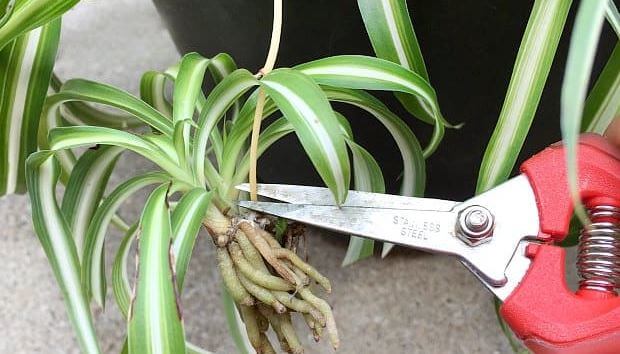Last Updated on September 9, 2023 by a Friendly Gardener
The delightful Chlorophytum comosum, commonly known as the Spider plant is an excellent hanging houseplant to include in your indoor garden. Ribbon-like leaves arching gracefully and baby spiderettes cascading downward add to this plant’s appeal, but occasionally your Spider plant can do with a trim.
Trimming Spider Plant Foliage
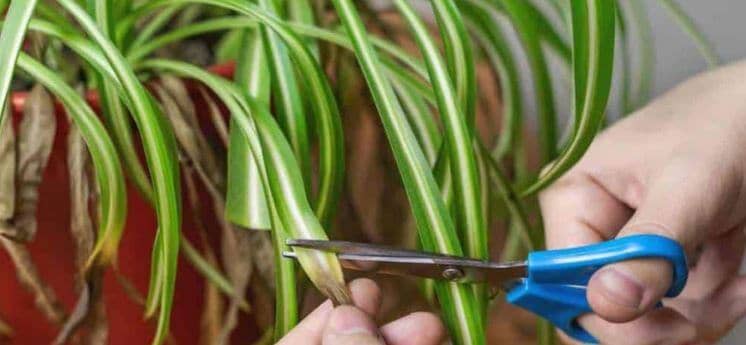
In an ideal environment, the Spider plant can grow to a length and width of 2.5 to 3 feet, so it can benefit from occasional trimming. Spring is the recommended season for pruning or summer at the latest.
Pruning a Spider plant not only keeps its size manageable but contributes to overall health and appearance. Another aspect that should be considered is that the more spiderettes that are produced, the more water and fertilizer the parent plant will need. So, spiderettes will need to be pruned as well. They can then be transplanted into damp soil or cultivated in water to increase your plant population. Expect the plantlets to root in a couple of weeks.
How to Prune a Spider Plant
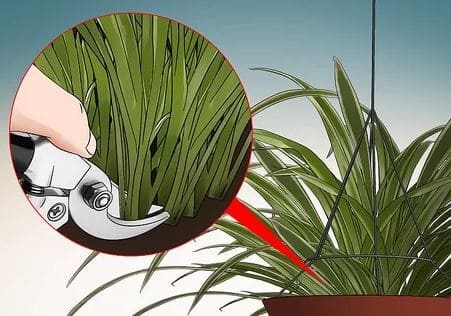
Spider plant leaves should be trimmed at the plant’s base. A pair of sterilized sharp scissors will work nicely when trimming your plant. Always snip off diseased, discolored, or dead leaves. When trimming the spiderettes, cut the long stems at the base of the mother plant and of the baby plantlet. If you wish to cultivate the plantlet in a separate container, the stem needs to be completely removed.
Spider plants that are root bound and most likely overgrown will require fresh repotting together with pruning. Begin by pruning your plant’s foliage. Remove the plant from its container and trim excess roots as well. After removing the plant from the pot, shake off excess soil and trim the outside and bottom of the root ball. Avoid trimming off more than an inch. Check for root rot symptoms and remove any brown or mushy roots before replanting.
Once the trimming is completed you can repot your Spider plant in fresh soil in a container that is an inch or two larger than the root system. Experts recommend pruning roots at least once every two years if not annually.
A characteristic of Spider plants is their tendency to become leggy. This happens generally because they are not pruned as they should be. Healthy spider leaves will feature white stripes in the center of a dark green background. Any yellowing leaves should also be removed. Remember that Spider plant foliage does not grow on stems as many other houseplants, so it’s best to snip them off at their base.
If your plant is quite leggy or overgrown, you can snip off healthy leaves always at the base. It’s best not to trim more than one-third of the plant foliage. If you trim a lot off, make it a point to wait two years before pruning again.
When Should I Prune My Spider Plant?
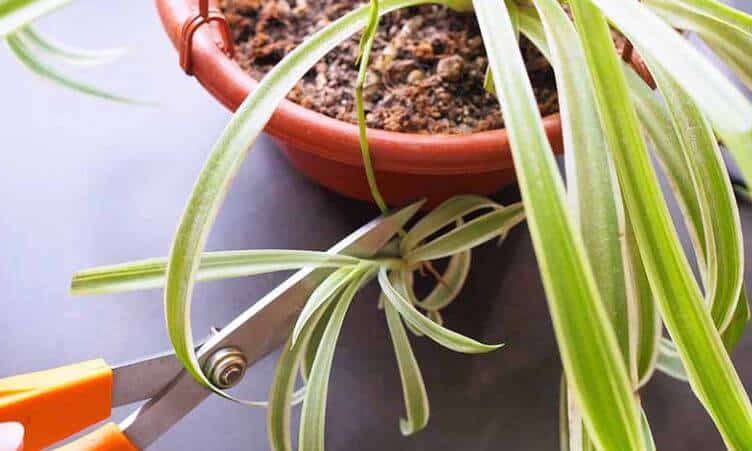
Spider plants need to be pruned at least once annually. The best season for trimming is early spring when the growing season begins. The same is true if you will be removing spiderettes.
Brown Tips on Your Spider Plant
Spider plant pruning should not be limited to plant size or diseased or dead foliage. The spider plant is susceptible to developing brown tips on leaves. Often the quality of the water is the culprit. Municipal water may contain a variety of chemicals including fluoride or chlorine that can damage sensitive plants. Plants will manifest their discomfort as chemicals build up in their leaves by developing burnt tips that turn brown.
If possible, it’s better to water your plants using distilled or filtered water or collected rainwater. If you have no alternative to tap water, leave a container with the water out overnight so that evaporation can aid the dissipation of the chemicals.
Brown tips may also be the result of excessive sunlight exposure or a lack of humidity. Keep your Spider plant out of direct sunlight opting for bright indirect light. To increase humidity, use a space humidifier, a pebble tray, or regular misting to raise humidity levels.
Whatever the cause, remove leaves with brown tips, pruning near the base of the plant.
Yellowing Spider Plant Leaves
Even if your Spider plant is basically healthy, some leaves may turn yellow. This is usually due to excess chemicals in the water you use or due to salt buildup in the soil bed due to fertilization. Remove yellowing leaves at the plant’s base. If you suspect salt buildup in the soil, consider flushing out the soil bed and diluting fertilizer for future feedings. Yellowing can also be symptomatic of your plant being root-bound.
If leaves continue to turn yellow after you have trimmed foliage, you probably need to trim the root system.
What About Overgrown Spider Plants?

Overgrown spider plants especially need trimming. You can divide the root clumps into several sections and replant them individually. Depending on whether your plant is in your garden or container cultivated may decide how much you want to prune.
Is Trimming a Spider Plant Necessary?
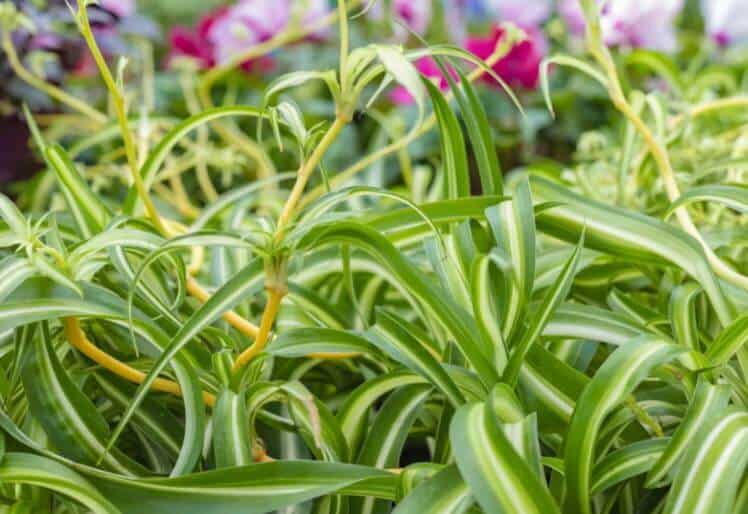
Yes, pruning is necessary. If you don’t trim your hair, beard, or mustache, you may look unkempt, and plants are no different. Sporadic trimming can leave your plant looking unruly with spiderettes appearing everywhere. An untrimmed Spider plant may become stagnant in its growth habit. Trimming will stimulate your plant, especially older plants. Pruning also reduces your plant’s feeding needs.
Trimming is not only a tool for the plant’s appearance. Pruning is crucial to plant health.

